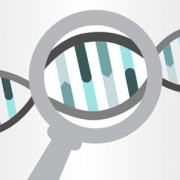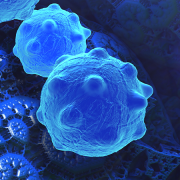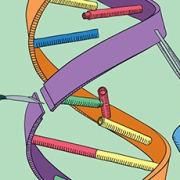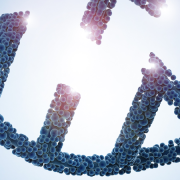Gene therapy moves towards the mainstream
While still in their infancy, gene therapy techniques could hold great promise for patients with rare diseases
15-year-old Daniel Wheeler from Bristol has featured in the news this week. Smiling for the cameras, he looks healthy and happy – despite the fact that he suffers from a rare and serious genetic condition. Daniel suffers from Wiskott-Aldrich syndrome (WAS), a disease caused by mutations in a key gene that result in a malfunctioning immune system and abnormal blood clotting.
The degree to which patients are affected varies, but they may suffer severe, repeat infections, eczema, asthma and bleeding episodes, as well as certain forms of autoimmune disease and cancer. Daniel’s elder brother died as a toddler due to complications arising from the same condition; he himself has endured frequent hospitalisations.
The only effective treatment is a tissue-matched bone marrow transplant, and without a suitable bone marrow donor, patients rarely live beyond their teens. Daniel did not have such a donor. However, in 2011 he and six other boys at Great Ormond Street Hospital in London and Necker Children’s Hospital in Paris received an experimental form of gene therapy for WAS.
Repairing faulty genes
Bone marrow stem cells (which generate blood cells) were removed from each child and treated with a gene therapy ‘vector’ – a carrier system for healthy WAS genes – before being replaced. The vector was derived from a modified virus, dubbed ‘tame HIV’ by the BBC. Viruses like HIV naturally insert into host cell DNA; replace the disease-associated sections of the virus with a healthy human gene and you have a delivery system to put that gene into diseased human cells.
This trial has been very successful. One child sadly has died, from a drug-resistant infection present before gene therapy began, but the other six remain healthy so far. Admittedly, it is not known how long the treatment will remain effective; it may be a permanent cure, or further treatments could be needed in the future to keep the boys healthy.
Professor Adrian Thrasher of Great Ormond Street Hospital told the Telegraph: “We are entering a new era where genetic treatments are entering mainstream medicine and offering hope to patients for whom conventional treatments don’t work well or are simply unavailable”.
Future potential
Can we hope, therefore, that patients with rare genetic diseases (including those diagnosed as part of the 100,000 Genomes Project) will in the not-too-distant future be able to receive gene therapies? Some may indeed; the first commercially available gene therapeutic was licensed late last year, and many more are in development.
However, gene therapy is never simple. It is easiest in situations where self-regenerating stem cells such as those in the bone marrow can be treated. If normal cells with limited lifespans are the target, repeat treatments will necessarily be needed.
There are also risks; early trials using viral-based systems have resulted in cancer caused by insertion of the viral vector in the wrong part of the genome, although subsequent gene therapies have been improved to reduce this risk.
For the time being, therefore, it is likely to remain the subject of attempts to treat severe conditions without effective treatments – but hopefully, it is indeed the beginning of a new era.
–









